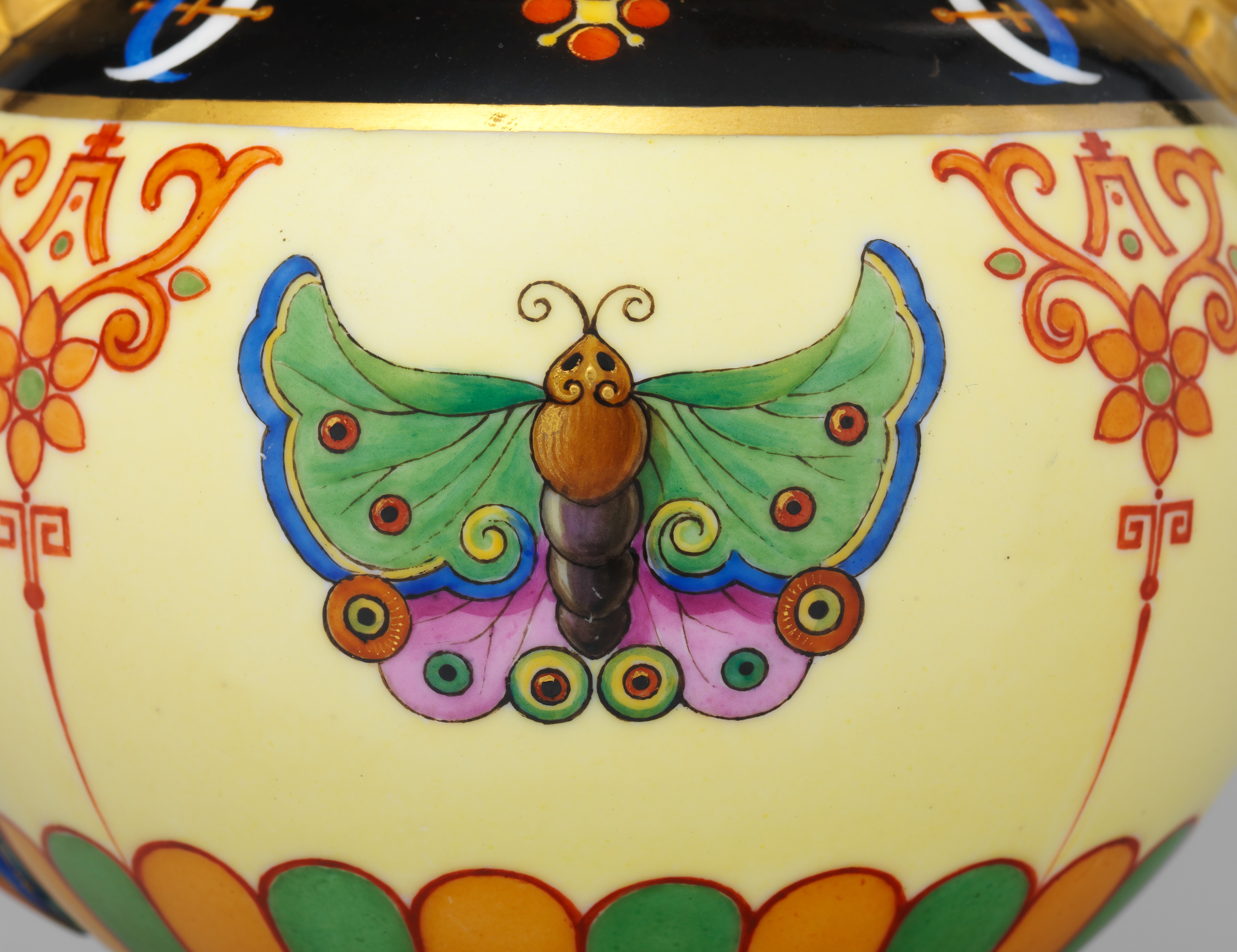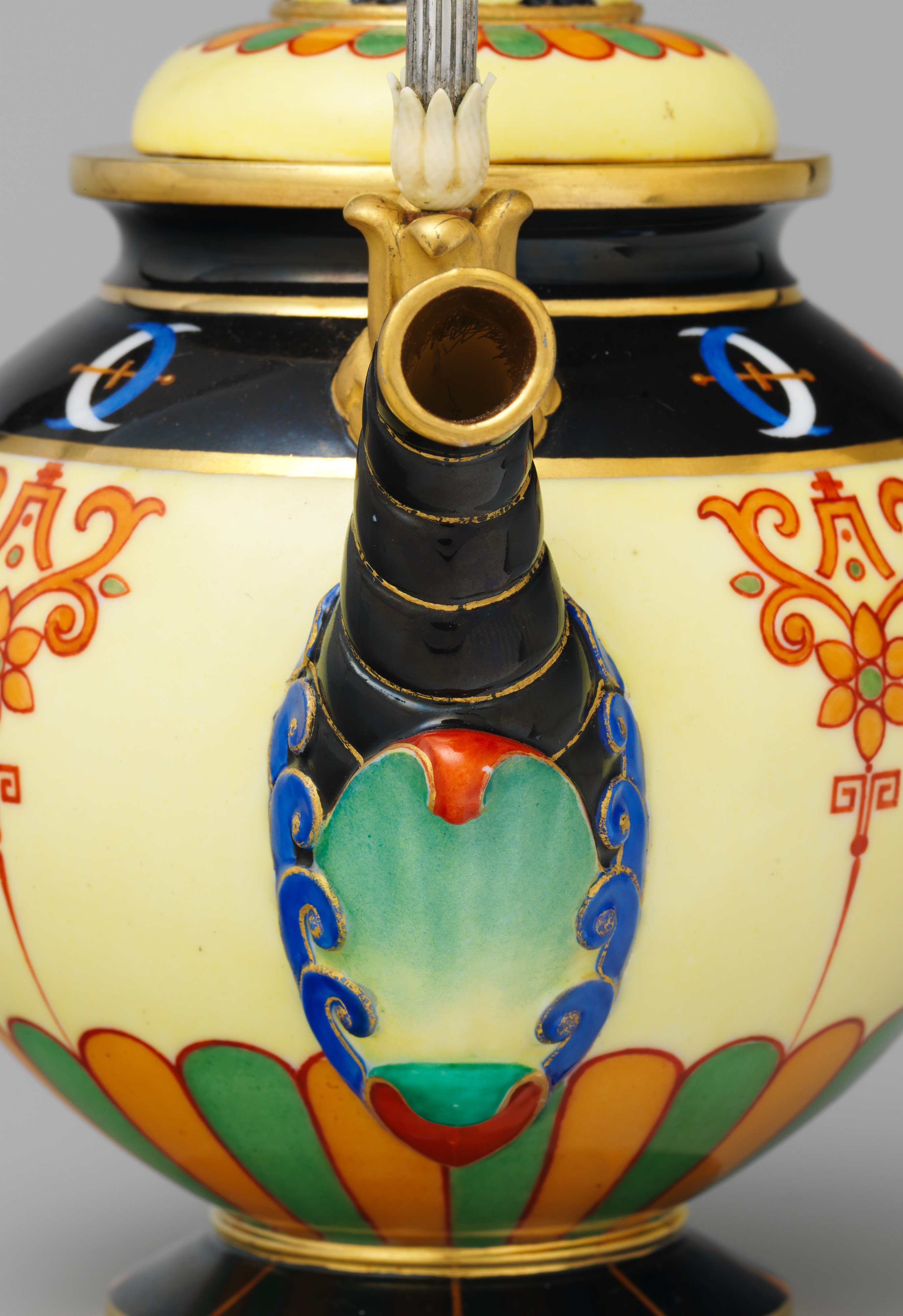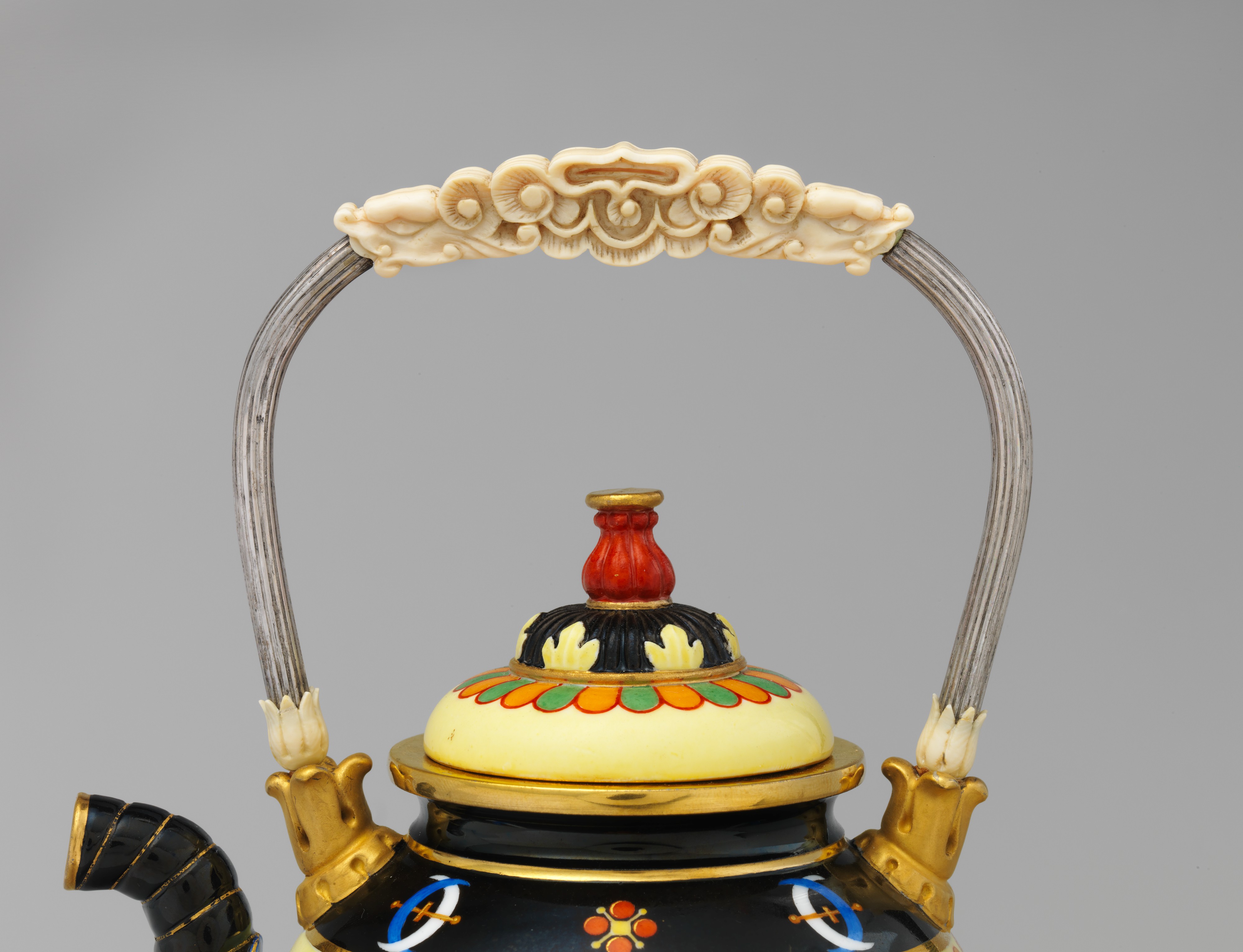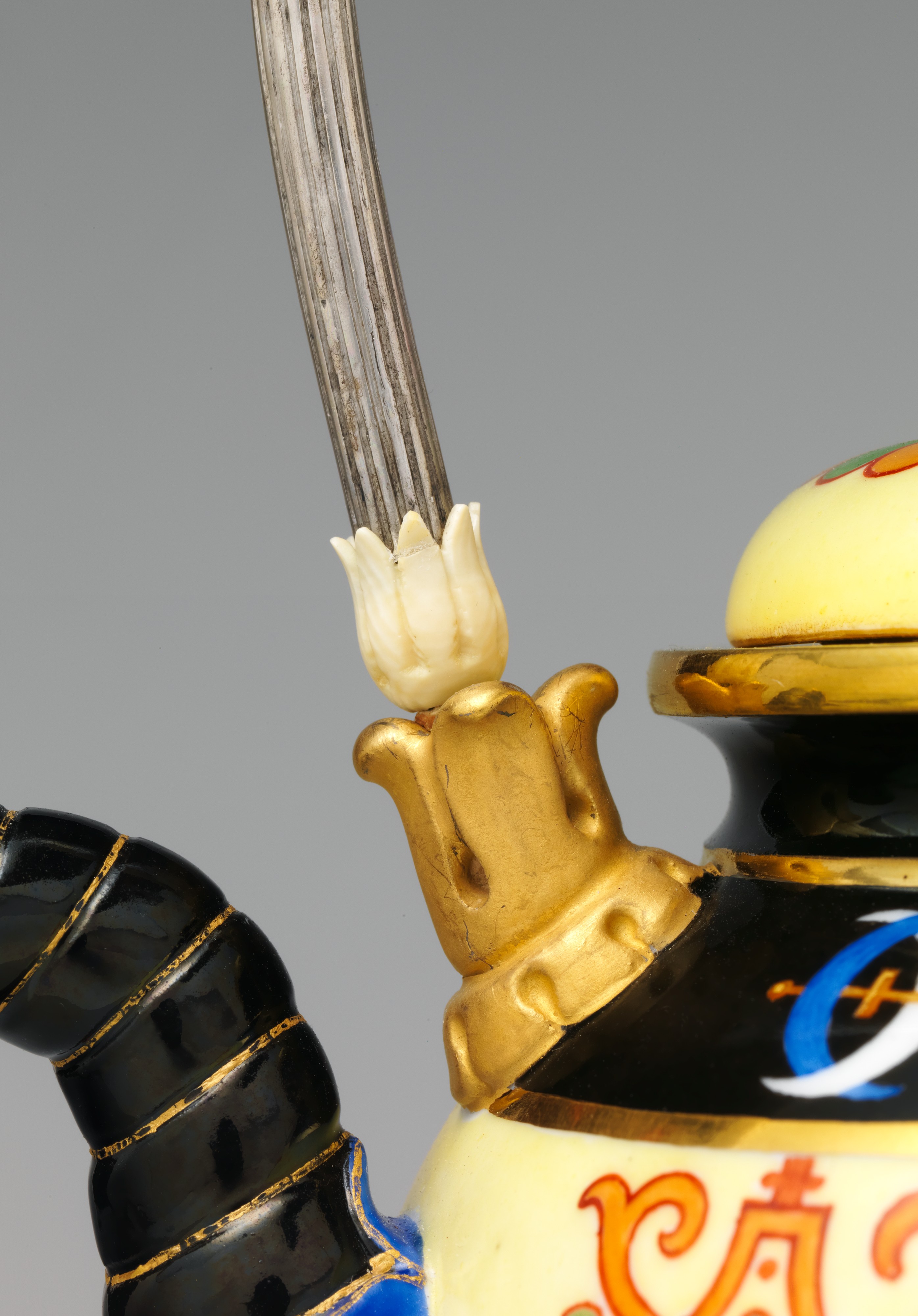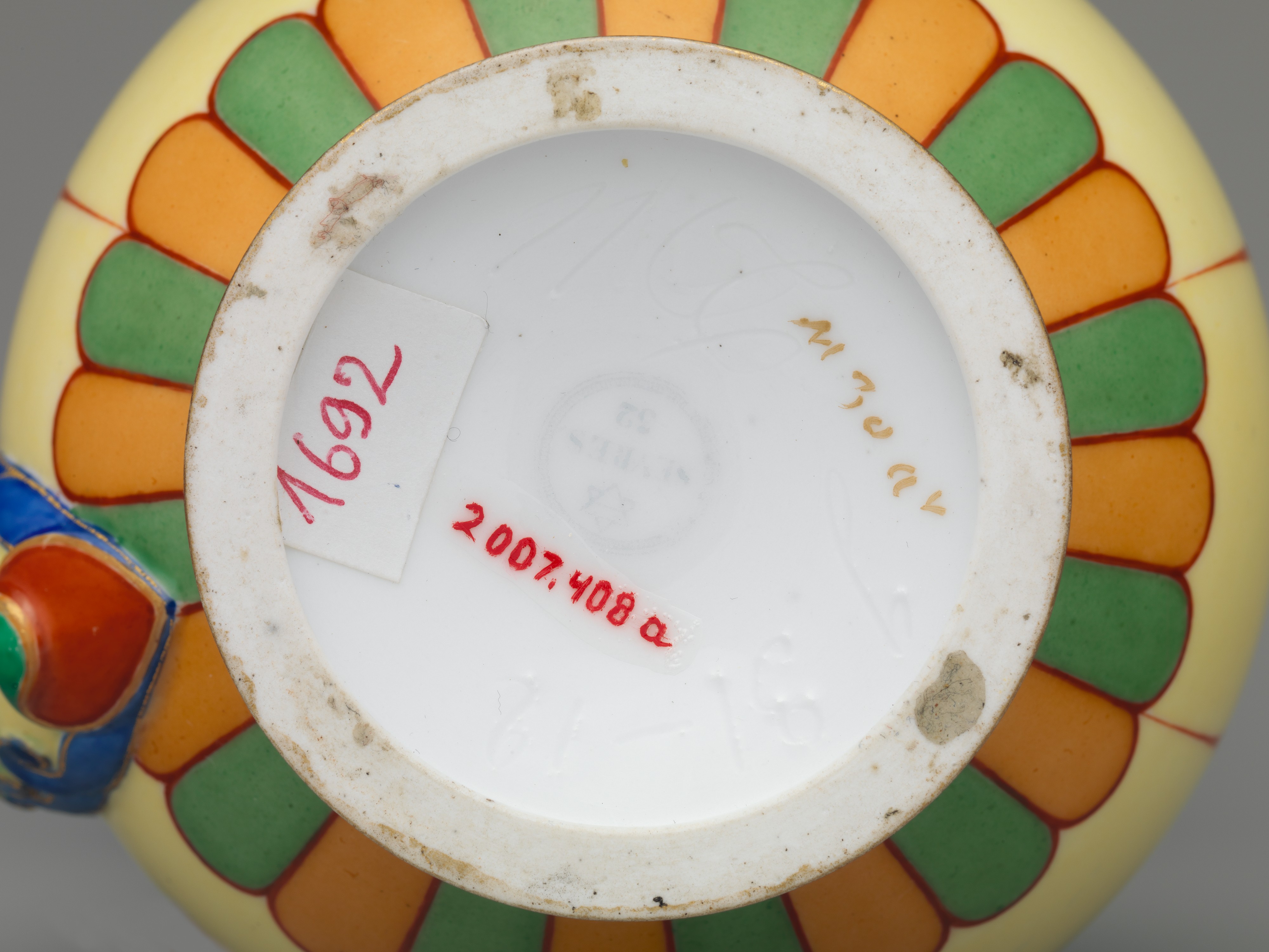Teapot (Théière chinoise)
Manufactory Sèvres Manufactory French
This teapot is one of the more striking and original creations of the Sèvres manufactory from the first half of the nineteenth century, when the factory’s production was marked by constant innovation and a striving for novelty. The decoration reflects the ongoing popularity of chinoiserie, a term used to describe the European fascination with an imagined and exotic Asia. In the eighteenth century objects in the chinoiserie taste were usually decorated with fanciful depictions of life in Asia as Europeans envisioned it. In contrast, this teapot employs and reinterprets motifs perceived to be Asian in origin. The lotus leaves of the handle, the carved ivory grip at the top, the prominent butterfly, and even the yellow ground color are references to Chinese decorative arts, but the manner in which these elements are rendered and combined is entirely European.
The Sèvres archives record that the teapot was made as an individual object rather than as part of a service and that is was sold to the queen of France, Marie-Amélie, who took possession of it in August 1837.
Due to rights restrictions, this image cannot be enlarged, viewed at full screen, or downloaded.
This artwork is meant to be viewed from right to left. Scroll left to view more.


